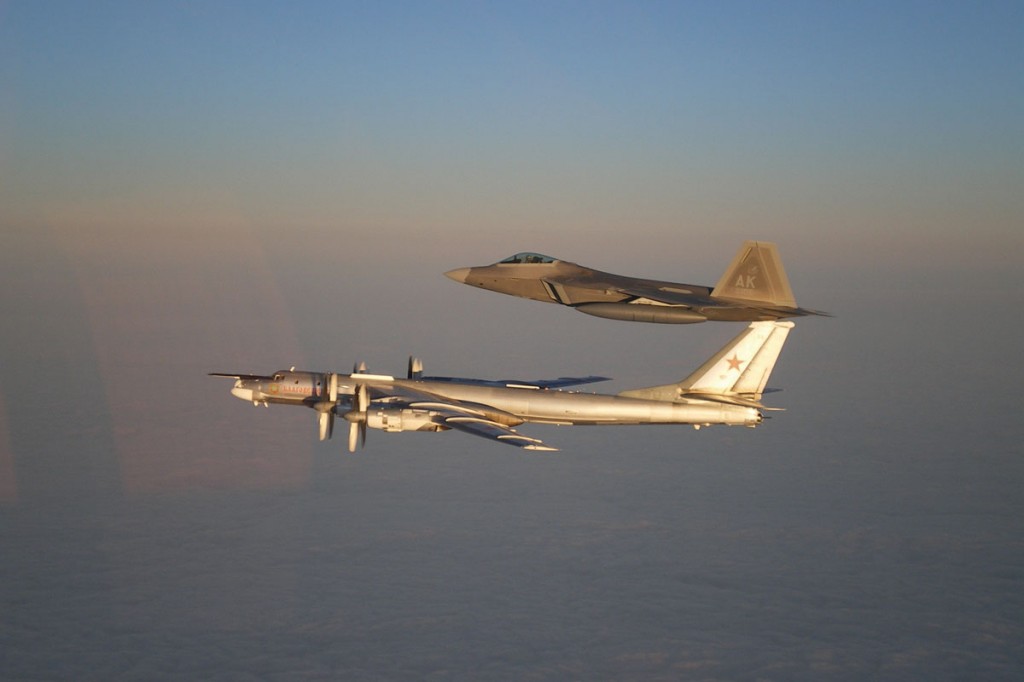Russians ‘Closed The Gap’ For A2/AD: Air Force Gen. Gorenc
Posted on
AFA CONFERENCE: “The alarming thing,” said the commander of US Air Forces in Europe, is that the Russians are catching up. “They’ve closed the gap.”
“The advantage that we had from the air I can honestly say is shrinking,” Gen. Frank Gorenc said, “not only with respect to the aircraft that they’re producing, but the more alarming thing is their ability to create anti-access/area denied [zones] that are very well defended” by batteries of ground-based anti-aircraft missiles.
After embarrassing fumbles in the 2008 invasion of Georgia, the Russians embarked on “a very large modernization” to improve both training and equipment, Gorenc said. “They learned a lot,” he told an increasingly unnerved roundtable of reporters at the annual Air Force Association conference here. “They [improved] quality and quantity.”
Russian fighter jocks are famous for flashy (sometimes fatal) maneuvers at air shows. But Gorenc isn’t solely or even primarily worried about their Top Guns: It’s ground-based radars and missiles that have him most concerned.
“It’s one thing to address an aircraft threat which has increased significantly — which by the way it has –but clearly surface to air missile systems are much cheaper, they’re much more available,” he said. “There’s clearly a whole set of modern long-range surface-to-air missile systems that are being layered in a way that makes access into that area more difficult.”
Gorenc is focused on the anti-aircraft kill zones that extend from two pieces of Russian territory in particularly: Crimea in the Black Sea and Kaliningrad on the Baltic. (He’s also keeping an eye on the Russians in the Arctic, he said, but that’s less immediate).
“Some of the array that’s in Kaliningrad extends into Poland today. That’s a fact,” he said. In other words, launchers on Russian soil can hit targets in NATO airspace. In fact, Gorenc has said in the past that a third of Polish airspace is in the Russians’ range.
“Up to this point, we have talked about anti-access/area denial with respect to the Pacific problem, but what I’m telling you is this is not just a Pacific problem, ” Gorenc said. “It’s as significant in Europe as it is anywhere else on the planet.”
A2/AD, to use the shorthand, is such a problem because it blunts the leading edge of the American war machine: airpower. It’s not just an Air Force issue. Aircraft carriers have been the flagships of the fleet since 1941, while the Army hasn’t lost a soldier to enemy airstrikes since 1953. Since at least 1991, the US has fought all its conflicts with absolute control of the air, unimpeded in its ability to reconnoiter the battlefield, bomb enemies, and rescue friendly ground troops.
“Anyone who has watched the United States operate understands… that it’s to their advantage to deny access into areas, particularly from the air,” Gorenc said. “With air superiority everything is possible, without it nothing is possible.”
So what can the US do? In the long term, the Pentagon’s “offset strategy” seeks to develop new technologies that leapfrog ahead of our enemies as they catch up to our current tech. A medium-term solution is stealth aircraft: Russian missiles can’t kill what their radars can’t see. (The Navy, less sure of stealth, prefers to jam enemy radars). Two squadrons of the new F-35A will arrive at Lakenheath air base in England, but that doesn’t happen until 2020, and they won’t be equipped to strike ground targets for some years after that. Stealthy F-22s have already done their first deployment to Europe to do training and test whether local airbases could support them. The F-22s are back in the US now, but Gorenc emphasized he could get them back if needed.
But the vast majority of US and allied air forces are conventional “Fourth Generation” aircraft that show up on radar just fine. Their survival depends not on technology but on training.
“We’re going to have to extend the training that we do to allow for access into areas that are very well defended,” Gorenc said. “We’re going to have to develop TTPs [tactics, techniques, and procedures] and continue to develop requirements [for new technologies that allow us to address that modern long-range SAM array.”
Tactics and training are critical for protecting NATO’s own bases as well. Some Cold War-era bases have hardened hangars, but Gorenc’s focus is less on fortifying a few big bases to resist bombardment than on shuffling aircraft among many small ones to avoid bombardment. Recent training missions by F-15s and A-10s in 23 countries were essentially “micro-deployments,” he said, with small groups of aircraft moving from one airfield to another in for short visits.
That’s good practice for a wartime tactic: fly aircraft, ground crews, and support equipment into a bare-bones air base, conduct a quick operation, then move out before Russian bombers or missiles retaliate. Gorenc wants to further expand the number of NATO bases the Russians have to worry about through an initiative called “Rapid-X”, which would move combat aircraft in and out of unimproved airfields with minimal facilities. The goal, he said, is “to generate combat power just at the right time, just in the right place.”
To meet the new threat, said Gorenc, “it’s pretty clear we’re going to have go back and start exercising some of the same stuff we used to do in the Cold War.”
Subscribe to our newsletter
Promotions, new products and sales. Directly to your inbox.

